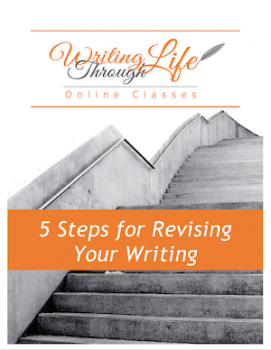DO YOU WANT your writing to take hold of your readers and pull them from one page to the next? Do you want to imbue your writing with more tension, movement, and power? One of the most potent ways to strengthen your writing is to use strong, precise, and active verbs in place of weak and passive verbs.
What is this nefarious thing called “passive verb” (also known as “passive verb construction” and “passive voice”)? It is where the subject of the sentence is having the action done to him, her, or it. In contrast, in active verb construction (active voice), the subject of the sentence is doing the action.
Examples of passive verb construction
- Improvements were made to the public transportation system by the Director.
- The papers were kept in a large purple box by Sheila.
- The lawn was covered by leaves.
You might be asking, “What’s so wrong with passive verb construction?” And the answer is, “Nothing,” if you want your piece to have a slower pace. However, when overused, your story can stall and even stagnate. Think about it — if someone is having something done to them, that someone is standing still; the object or person that is doing is the one moving.
So the first step to enlivening your writing is to transform passive verbs to active verbs.
The second step is to choose strong verbs that convey the exact mood you are going after. You can even bestow inanimate objects with movement using the right verbs.
[bctt tweet=”The first step to enlivening your writing is to transform passive verbs to active verbs.” username=”writingthrulife”]
Consider this line from Frank Conroy’s memoir, Stop Time:
“At the apex of the immense blue dome a shapeless white sun streamed down through the air, locking the world into absolute stillness and silence.”
In this passage, the sun is active. It moves. The sun streams and locks. Contrast that with a passive example: “The world was locked into absolute stillness and silence.” There’s nothing inherently wrong with this way of saying it; it just doesn’t move, and it does not provide as powerful an image as the former.
Now, consider this passage from Sophie’s Choice by William Clark Styron, in which he gives an intangible concept — lust — a life of its own:
“My lust was incredible—something prehensile, a groping snout of desire, slithering down the begrimed walls of the wretched old building, uncoiling itself across a fence, moving with haste serpentine and indecent to a point just short of her upturned rump, where in silent metamorphosis it blazingly flowered…”
As author, the choice is yours: passive or active; stillness or movement.
Try this
One way to quickly identify passive verbs is to look for the words is, are, was, were, and had been, followed by a past participle (made, improved, kept, given, covered).
- Open a piece of writing you are working on.
– - Using your word processor’s Find function (in Microsoft Word, it is under the Edit menu), perform a search for the word was. (Check the “Find Whole Words Only” option in the expanded Find dialog box.)
- For each instance, ask the following questions:
–- Is was followed by a past participle?
– - If so, who is doing the acting and who or what is acted upon? (In the last bullet of the examples of passive verb construction above, the the lawn is being acted upon.)
– - Is a passive voice appropriate in this situation? For example, you might want to write in passive voice, depending on context. For example, if your character had something done to him against his will, you might want to emphasize his feelings of helplessness by writing, “He was beaten” vs. “They beat him.” The point is to consciously choose between active and passive verb construction in order to control the tone and pace of your story.
– - If desired, change the passive verb construction to an active one: “Leaves covered the lawn.”
– - Then ask yourself, “Am I using the best, most precise verb to convey what I want to convey?” Instead of “Leaves covered the lawn,” I could write, “Leaves blanketed the lawn,” or “Leaves smothered the lawn,” depending on what I want to communicate.
– - Repeat your Find, searching for the words is, are, were, have been, and had been.
- Is was followed by a past participle?
When you are done revising, read both versions aloud, one right after the other.
What have you learned about your writing by searching for passive verbs and replacing them with precise, strong, and active verbs?
For more tips on revising …
Download my PDF: 5 Steps to Revising Your Writing!



